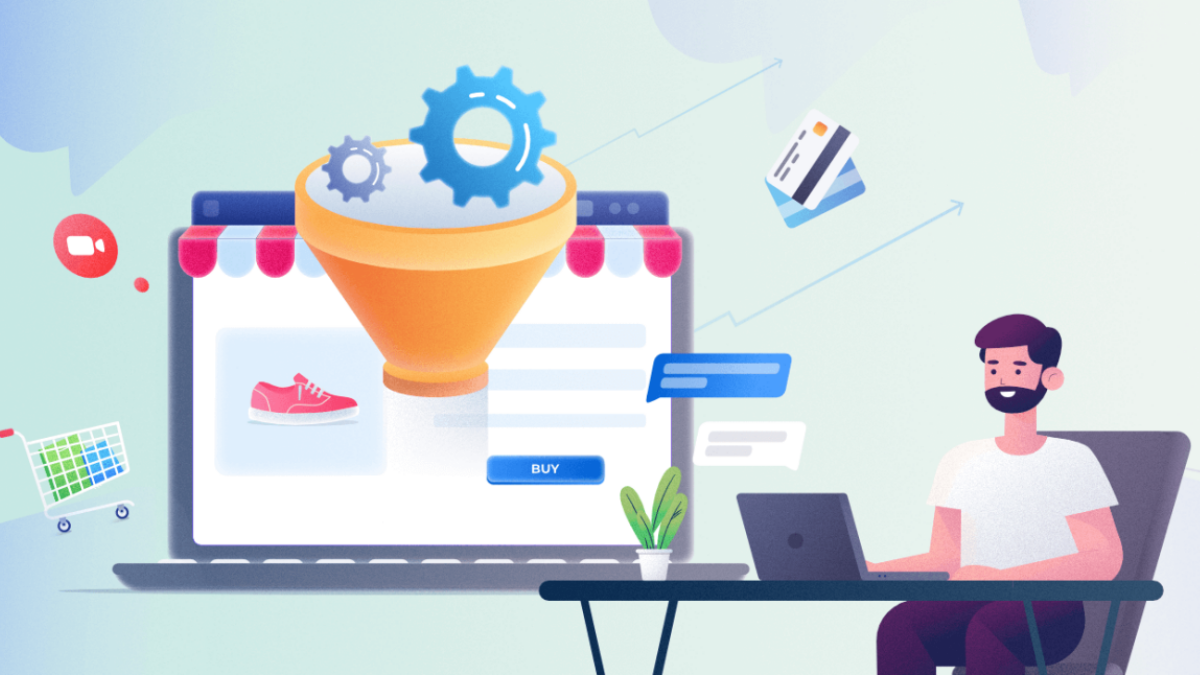
In the fast-paced world of eCommerce, success depends heavily upon embracing modern tools and trends. To be competitive in the market, your business needs to take advantage of every opportunity to increase its conversion rates – and one way of doing just that is by optimizing your eCommerce software. By understanding how different elements work together across various platforms, you can improve the customer experience while ensuring that visitors become buyers.
In this article, we’ll discuss strategies for maximizing your conversion rate through tactics, such as refining content marketing techniques and making tweaks to user interface (UI) design elements. Read on for smart tips on how you can better optimize your site’s performance.
Table of Contents
Identifying and Analyzing User Experience Points for Improvement
When it comes to optimizing eCommerce software, identifying and analyzing user experience points for improvement is crucial to success. In the world of online shopping, consumers demand a seamless and user-friendly experience that is tailored to their individual needs. As such, analyzing user experience points and identifying areas for improvement can help eCommerce businesses boost sales, drive customer engagement, and ultimately, increase ROI.
By leveraging powerful analytics tools and carefully examining user feedback, businesses can develop a deep understanding of what works and what doesn’t and make data-driven decisions to improve overall customer satisfaction. In today’s fast-paced digital landscape, optimizing eCommerce software is more important than ever, and by investing time and resources into analyzing user experience, businesses can stay ahead of the curve and drive lasting success.
Leveraging Heatmaps to Identify Areas of Navigation Difficulty
Heatmaps provide invaluable insight into how users interact with websites. By analyzing user clicks, scrolls, and mouse movements on a page, heatmaps can reveal areas of difficulty in navigation that can then be improved for better customer engagement. This data-driven approach allows businesses to identify where customers abandon shopping carts and which pages are underperforming or challenging to navigate.
With heatmap analytics, website owners can get clear insights into how their eCommerce solutions are performing – from the overall user experience to specific elements like product placement and content marketing tactics – allowing them to develop targeted strategies for improvement. Knowing “what is PWA” is a crucial factor here as it can be used to create a more optimized user experience.
Integrating A/B Testing to Measure Performance of Different Marketing Strategies
A/B testing allows businesses to measure the performance of different marketing strategies by comparing two variations (or “A” and “B”) of a page. This technique allows website owners to go beyond mere speculation and data-driven decisions, giving them a clear picture of which strategy is most effective for driving customer engagement and increasing conversion rates.
With A/B testing, you can experiment with different elements such as pricing models, product placement, promotional offers, or content marketing initiatives. By measuring the performance between these two versions of your web page, you can determine which appeals more to consumers – allowing you to optimize your eCommerce software accordingly.
Improving Site Load Times by Optimizing File Sizes and Compression Techniques
To optimize eCommerce software, reducing site load times is essential. Research has shown that slow sites can lead to lower conversion rates due to customer frustration and a lack of engagement. By optimizing file sizes and compression techniques, businesses can reduce loading times and improve the overall performance of their websites.
From minifying code to enabling browser caching, several options are available for improving page speed which can help boost your site’s performance while creating a smoother user experience. By investing in optimization technologies such as content delivery networks (CDNs) or image optimization tools, businesses can make sure their pages load quickly every time – leaving customers satisfied and more likely to convert.
Using Automated A/B Testing Tools to Streamline Optimization Processes
For businesses looking to stay on top of customer engagement trends, automated A/B testing tools can be an invaluable asset. By automating the optimization process, these tools allow web owners to quickly and easily test different variations of their eCommerce solutions without having to write complex code or manually track results.
Automated A/B testing tools provide valuable insights into how customers respond to design, content, or functionality changes – allowing businesses to quickly identify areas that need improvement and make data-driven decisions for better user experience. In today’s digital landscape, automation is crucial in staying ahead of the competition – helping businesses optimize their eCommerce software for maximum ROI.
Introducing Personalization for Improved Website Engagement
Personalization is critical in successful eCommerce software, allowing businesses to tailor content and experiences to individual customers. Introducing personalized elements into your website design can create a unique experience for each visitor – improving customer engagement and loyalty.
From dynamic product recommendations to customized messaging, personalizing the online shopping journey helps customers feel valued and makes them more likely to return. Additionally, introducing personalization also allows businesses to track user behavior across multiple channels – giving them valuable insights into their customer base that can be used to optimize their eCommerce solutions for maximum conversion rates.
Utilizing Loyalty Programs to Enhance Customer Retention
Another great way to optimize eCommerce software is by offering loyalty programs. By creating an incentive for customers to return, loyalty programs can help businesses increase customer retention and boost their bottom line.
Whether it’s offering a discount on their next purchase or giving them access to exclusive content or events, loyalty programs incentivize customers to continue purchasing from your business – resulting in more conversions and higher ROI. Additionally, data gathered from loyalty program participation can give you valuable insights into how customers interact with your eCommerce solutions – allowing you to make more informed decisions about optimization strategies.